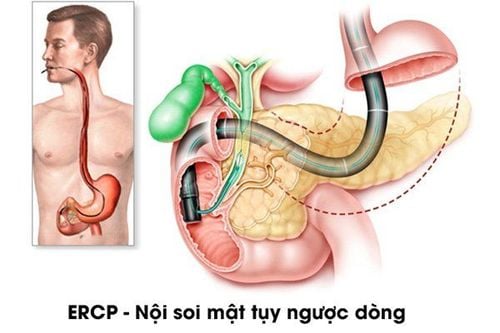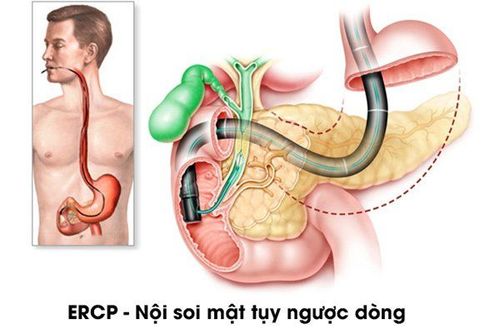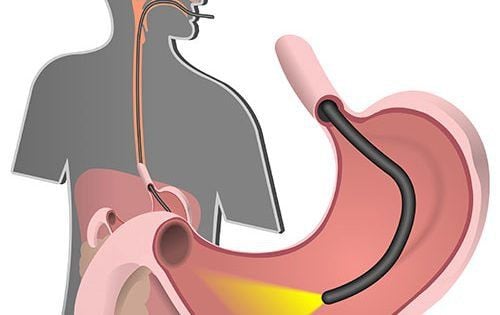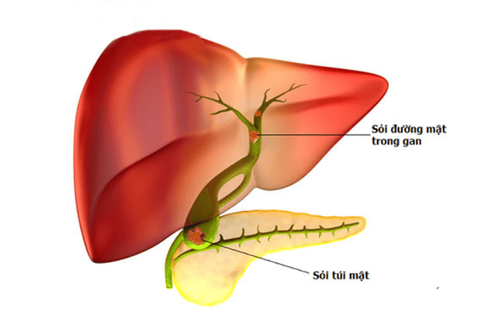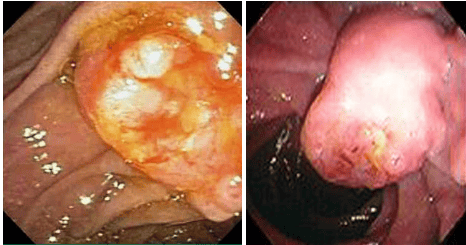This is an automatically translated article.
Post by Master, Doctor Mai Vien Phuong - Department of Examination & Internal Medicine - Vinmec Central Park International General Hospital
Diagnosis and treatment of biliary tract disease, pancreatic head and duodenal area around the large papilla has long been a challenge for the world medicine in general and our country in particular. In Vietnam, biliary-pancreatic disease requiring surgical intervention is still common, in which common bile duct stones are a common pathology with very serious complications such as cholangitis, biliary abscess.
In terms of pathogenesis, gallstones in Vietnam may be different from those in Western countries, but the diagnosis and treatment of gallstones are not much different. For more than a decade now, thanks to the application of ultrasound, the diagnosis of biliary-pancreatic disease in our country has made significant progress, but in terms of treatment, we still use surgical methods, so the important disadvantages of this method are still very low. it still exists. Until now, when facing a patient with recurrent gallstones after repeated surgery, or when meeting a patient with biliary tract infection in shock, a patient with severe pancreatitis, etc. Clinicians are faced with many options, not only in indications but also in difficulties at the time of surgery.
1. Means of diagnosing gallstones
To diagnose biliary-pancreatic diseases in medical facilities before ultrasound was available, mainly based on clinical history and history, radiographs prepared with oral or intravenous contrast were also used. used, but the results are often not as expected. In the past 20 years, ultrasound has been applied in Vietnam and is increasingly popular, when this diagnostic tool was born, it helped diagnose hepatobiliary-pancreatic diseases quite well, especially gallstones. biliary tract, and the main bile duct stones are the most difficult, low bile duct obstruction (lower third of the common bile duct), lesions around the duodenal papilla or the image of the pancreatic duct, diagnostic results are limited. regime. Percutaneous cholangiography along with other means such as computed tomography (CT Scanner), magnetic resonance imaging (MRI), endoscopic ultrasound are quite good diagnostic methods, however, biliary and pancreatic diseases are not equipped. These facilities are not only expensive but also have diagnostic limitations and are not yet involved in the intervention and treatment process. Pancreatic mass imaging, ultrasound as well as other modern diagnostic tools, need the most valuable X-ray pancreatic ducts through endoscopic retrograde cholangiopancreatography.

2. Some difficulties in surgical treatment of gallstones
Classical exploratory exploratory cholangiectomy has a history of over 100 years and until recent years, the treatment of common bile duct stones (OMC) in our country is open surgery. stones and Kehr drainage. Because in reality when facing a case of biliary-pancreatic disease, even though elective surgery is prepared, especially in emergency biliary tract, we often encounter the following difficulties:
Infection of the biliary tract due to stones is A surgical emergency requires early biliary decompression, but in an emergency where surgery is often difficult to complete, complications and death may occur at a certain rate. Biliary obstruction due to recurrent stones and patients who have undergone cholecystectomy, reoperation will face many difficulties in finding the biliary tract. Residual stones after surgery, stones in the liver, stones in the pancreatic duct all cause difficulties for the surgeon. Worms on the bile duct, on the main pancreatic duct or acute pancreatitis due to stones, rarely successful medical treatment alone but surgery is severe. Biliary stenosis is most often caused by malignancy of the biliary tract or pancreas, the possibility of radical surgery is not high, the 5-year survival rate is quite low, the temporary surgery is heavy, while the world has proven its effectiveness. of endoscopic retrograde cholangiopancreatography (ERCP). Finding the cause of acute pancreatitis is often difficult, the treatment of acute pancreatitis due to gallstones is often delayed, when there are new complications, surgical intervention, severe postoperative consequences. Meanwhile, endoscopic retrograde cholangiopancreatography not only helps diagnose the cause of the disease early, but also effectively treats the blocked stone in the common biliary-pancreatic canal. Tissue obstruction in patients at high risk due to comorbidities such as cardiovascular, respiratory, diabetes, cirrhosis, old age... often has a severe prognosis. Bile leak after surgery is very complicated and difficult to find fistula, patients with biliary stone surgery often return to the hospital because of disease or recurrence, surgical scars cause psychological trauma, not least for female patients.
3. The first foundations of endoscopic retrograde cholangiopancreatography in Vietnam
In order to find a more and more accurate diagnosis, in 1945, Dr. Lee Gillette used a rigid endoscope through the duodenal papillae to take cholangiogram and found stones in the gallbladder, considering this as the early stage of internal medicine. retrograde cholangioscopy.
In Vietnam, the previous difficulties were in both diagnosis and treatment, especially the high rate of reoperation, slow treatment, and complications - including death. Because of the factors mentioned above, the introduction of endoscopic retrograde cholangiopancreatography has really created an important turning point in both diagnostic and therapeutic aspects. It is possible to divide the stages of development of biliary-pancreatic disease in Vietnam in terms of ultrasound application in diagnosis, starting with ultrasound in the 1980s. In fact, ultrasound was first applied to diagnose the disease. Hepatobiliary disease, mainly stones and worms in the bile duct or liver abscess caused by amoeba in 1981 at Viet Duc Hospital and published initial results of 150 cases in the journal Surgery No. 3 in 1986. Since 1985, ultrasound Diagnosis has been widely applied at Bach Mai Hospital, Viet Xo Hospital, Military Hospital 103 Hanoi. The application of ultrasound in the southern provinces began to be slower, of which in Ho Chi Minh City. Only in 1990, Ho Chi Minh City saw clinical application, but endoscopic treatment of this disease by a minimally invasive method, started using endoscopic retrograde cholangiopancreatography at Ho Chi Minh City's Binh Dan Hospital since 1993. is the first facility in the country.
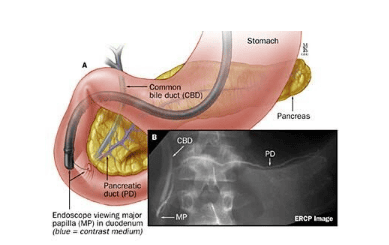
4. The role of endoscopic retrograde cholangiopancreatography in the treatment of biliary tract disease
In fact, endoscopic retrograde cholangiopancreatography to diagnose the disease is not much, only use it in some special situations when the available means have not found the cause, for example, a patient has septic shock, yellow skin and coma are on mechanical ventilation but medical resuscitation still does not improve, the method of choice is endoscopic retrograde cholangiopancreatography. Moreover, because this technique has contributed a lot to the success in the treatment of biliary-pancreatic diseases, it is increasingly prescribed by many doctors, however, endoscopic retrograde cholangiopancreatography only treats when endoscopic diagnosis is made. excluded, so the number of diagnostic endoscopy cases is increasing.
In the treatment of biliary-pancreatic diseases, gallstones are the most studied pathology. The idea of dissolving cholesterol-type gallstones had been thought of by Durane since 1872, but it was not until 1892 that Naunyn did this in an experiment on dogs. In the history of medicine, surgical intervention in gallstone disease has existed for a long time, in 1882 Bobbs was the first to treat gallstones by surgically opening the gallbladder to remove stones and drain. Today, with the development of technology as well as a better understanding of the structure of gallstones and the dissolving agents, new treatment methods have been introduced such as: Taking drugs containing bile acids to dissolve stones, and extracorporeal lithotripsy. It is possible with shock wave combined with placement of a nasogastric tube to drain, injecting gallstones into the biliary tract, and removing gallstones through the skin. However, endoscopic retrograde cholangiopancreatography still plays a significant role in the treatment of gallstones, with the advent of endoscopic ultrasound, endoscopic retrograde cholangiopancreatography will have further advances in the treatment of biliary tract disease. .
Currently, the Department of Gastroenterology at Vinmec International General Hospital has applied the endoscopic retrograde cholangiopancreatography technique to treat diseases of common bile duct stones, hepatic duct stones, ampulla of Vater, pancreatic head tumor. Biliary stents, nasal bile ducts, including choledocholithiasis, with a high success rate of over 98%.
Endoscopic retrograde cholangiopancreatography at Vinmec is performed by famous doctors with high expertise, good skills, dedication and professionalism. In addition, Vinmec has equipped a modern soft endoscopic system with Endocut Electric Knife which has the advantage of not causing pancreatitis and pancreatic reactions, helping to increase the success rate and minimize possible complications. in this technique.
Please dial HOTLINE for more information or register for an appointment HERE. Download MyVinmec app to make appointments faster and to manage your bookings easily.





